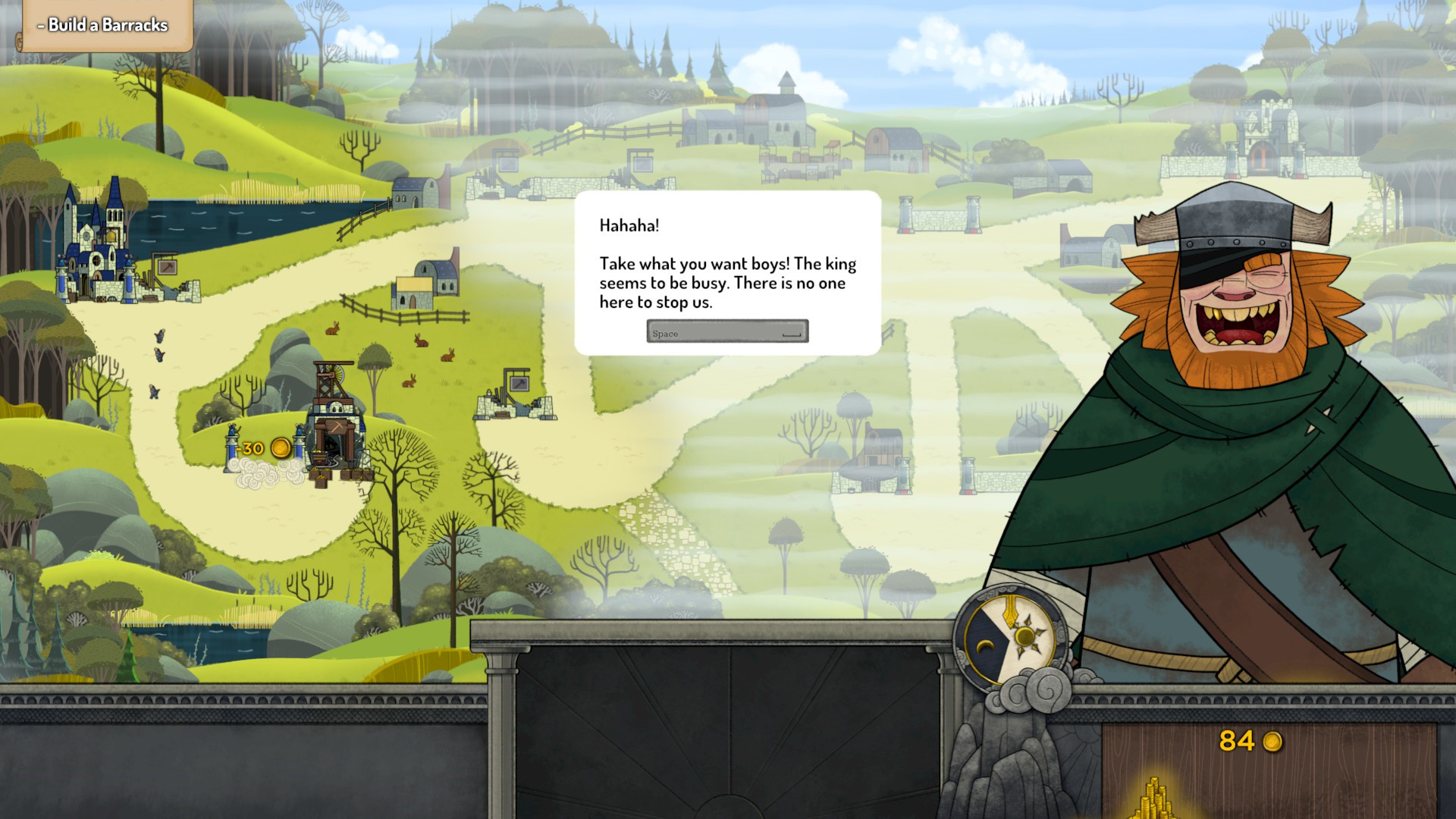Controlling this RTS by typing works better than it has any right to
Forget actions per minute. It's all about WPM in Touch Type Tale.

Typing of the Dead, but a real-time strategy game. That's the pitch for Touch Type Tale, and as many words as it took for me to say "I'm in." I love the absurdity of typing tests layered on top of other genres—why haven't more games ripped off Typing of the Dead?—but I honestly didn't expect Touch Type Tale to be so fun. There's more depth and smart design here than the gimmick prepared me for.
As real-time strategy goes, Touch Type Tale is a simple game, but it gives you a lot more to do than I first realized. Each level is a single-screen 2D map, with a honeycomb of roads connecting nodes where you'll find building plots or existing defensive structures. On a plot you can build a farm for earning money, or one of several military buildings that recruit swordsmen or spearmen or archers or cavalry. All of this is done with typing, of course.
Each road will have a short lowercase word on it that tells your units to walk down that path. Buildings use capital letters, and typing that word will open up a sub-screen where you interact with the building. On a farm, that involves typing four more words as quickly as you can to set your farmers to work on four plots of land. In a barracks, typing the word starts recruitment, which continues automatically until you type another word to stop it (or you hit a unit limit).
Then there are some commands that take only typing a single letter, like harvesting from a farm (fast money, baby!). It's a clever mix that mostly makes it easy to differentiate between types of commands and keep them all straight in your head.

After just a few minutes with Touch Type Tale I was bouncing between directing my units around the map, opening farm buildings to harvest my crops, and recruiting troops and workers. Occasionally I'd get "stuck" in a word I didn't mean to be typing and be confused why my command wasn't going through, until I spotted the word I'd queued into somewhere on the map. Touch Type Tale needs louder feedback for when you mess up, but I also think I'd be much faster at spotting my errors after an hour or two of play.
After a tutorial level, I played another that completely changed things up into a tower defense format, sending hordes of enemies at me who I could zap with a magic laser tower atop my base. I still had to recruit troops and send them around the map to guard against attackers, so this added yet another typing requirement, and with real time pressure. It reminded me of racing to score the best WPM in typing class, which was a blast.

A later level layered in a magic system, unit upgrades, special units, and demanded I control my armies a bit more strategically. By default, typing a road command will send all the troops there walking down to the next node. But hit Ctrl and a specific letter and you can control just a specific type of unit—say, your spearmen—or select half or even a single unit to issue a command to. It's slightly clumsy, but still allows for nuance I didn't expect.
Keep up to date with the most important stories and the best deals, as picked by the PC Gamer team.
Your troops do more damage when they attack enemies from more than one side, and cavalry will move faster if they aren't grouped with footmen, dealing extra damage when they charge. So there's reason to micromanage.
In the levels I played Touch Type Tales' AI was disappointingly passive, but there's a flexible difficulty slider that hopefully makes them more aggressive at higher settings. It's still pretty lightweight as strategy games go, but juggling half a dozen different typing prompts at once is a fun and different sort of challenge.
The developers expect it to be out in early 2020, with a beta later this year to get more player feedback.

Wes has been covering games and hardware for more than 10 years, first at tech sites like The Wirecutter and Tested before joining the PC Gamer team in 2014. Wes plays a little bit of everything, but he'll always jump at the chance to cover emulation and Japanese games.
When he's not obsessively optimizing and re-optimizing a tangle of conveyor belts in Satisfactory (it's really becoming a problem), he's probably playing a 20-year-old Final Fantasy or some opaque ASCII roguelike. With a focus on writing and editing features, he seeks out personal stories and in-depth histories from the corners of PC gaming and its niche communities. 50% pizza by volume (deep dish, to be specific).

